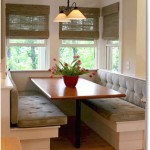Designing A Raised Bed Vegetable Garden
A raised bed vegetable garden offers numerous advantages over traditional in-ground gardening, making it an appealing choice for both novice and experienced gardeners. Raised beds provide better drainage, improved soil quality, and easier accessibility, allowing for greater control over the growing environment. Designing a raised bed garden involves careful planning and consideration of factors such as location, size, materials, and planting scheme. This article will guide you through the process of creating a successful and productive raised bed vegetable garden.
Location, Sunlight, and Soil Type
Choosing the ideal location for your raised beds is crucial. Select a spot that receives at least six hours of direct sunlight daily, ideally eight to ten hours. Avoid areas prone to flooding or excessive shade. Consider the proximity to water sources and your existing landscape. Ensure that the chosen location allows for easy access for planting, weeding, and harvesting. Assess the soil type in the chosen area. Raised beds can be filled with a customized soil mixture, but it is important to understand the existing soil conditions for drainage and nutrient content. If the soil is clay-heavy, adding amendments like compost or sand can improve drainage.
Choosing the Right Materials and Size
Various materials can be used to construct raised beds, each with its own advantages and disadvantages. Common options include lumber, concrete blocks, recycled materials, and even metal. Lumber is a popular choice due to its affordability, ease of use, and aesthetic appeal. However, it requires regular maintenance to prevent rot and decay. Concrete blocks provide a durable and long-lasting option but can be heavier and more challenging to move. Recycled materials like pallets, old tires, or bricks offer a sustainable and cost-effective solution. Determine the size of your raised beds based on your available space, desired crop yield, and accessibility. Smaller beds, typically three to four feet wide, are easier to manage and allow for convenient access from all sides. Larger beds may require additional walkways for navigation.
Designing the Planting Scheme and Maintaining Your Raised Beds
Once the raised beds are constructed, it is time to plan the planting scheme. Consider the spacing requirements for different vegetables and create a layout that maximizes space and allows for efficient growth. Implement companion planting techniques by grouping vegetables that benefit from each other. For instance, planting basil near tomatoes can deter pests while attracting beneficial insects. Regular maintenance is vital for a thriving raised bed garden. This includes watering, weeding, fertilizing, and pest control. Implementing a drip irrigation system can minimize water waste and ensure consistent moisture. Mulching the soil surface helps retain moisture, suppress weeds, and regulate soil temperature. Regular fertilization provides essential nutrients for healthy plant growth. Be vigilant in monitoring for pests and diseases and take appropriate action to prevent outbreaks. Consistent care and attention will ensure your raised beds remain productive and enjoyable.
Building a Raised Bed Garden
Building a raised bed garden is a straightforward process. Once you have decided on the size, shape, and materials, you can begin construction. For lumber beds, you will need to cut the boards to the desired length and width. Assemble the boards using screws or nails. Once the frame is complete, you can line the inside with landscape fabric to prevent weeds from growing. The next step is to fill the bed with a quality soil mix. This can be a combination of compost, topsoil, and amendments like peat moss or vermiculite. The soil should be deep enough to accommodate the root systems of your chosen vegetables. You can then add a layer of mulch to help retain moisture and suppress weeds.
To make it easier to move around and access the bed, you can create walkways between them. These walkways can be made of gravel, wood chips, or pavers. If you are using lumber for your raised beds, be sure to stain or seal the wood to protect it from weather damage. Finally, plant your vegetables according to their spacing requirements. You can find this information on seed packets or online.

Vegetable Garden Layout 7 Best Design Secrets A Piece Of Rainbow

4x8 Raised Bed Vegetable Garden Layout Ideas What To Sow Grow

How To Plan For A Raised Garden Bed Brepurposed

Raised Bed Vegetable Garden On A Slope Gardening Healthy Alyona

4x8 Raised Bed Vegetable Garden Layout Ideas What To Sow Grow

Planning Your Vegetable Garden Mapping The Beds

Raised Bed Garden Design Tips Growing In The

4x8 Raised Bed Vegetable Garden Layout Ideas What To Sow Grow Small Gardens

Raised Bed Garden Designs
:strip_icc()/BHG114133-0be7f169b4bb41649b474dc6baa8316f.jpg?strip=all)
The Benefits Of Raised Vegetable Gardens








